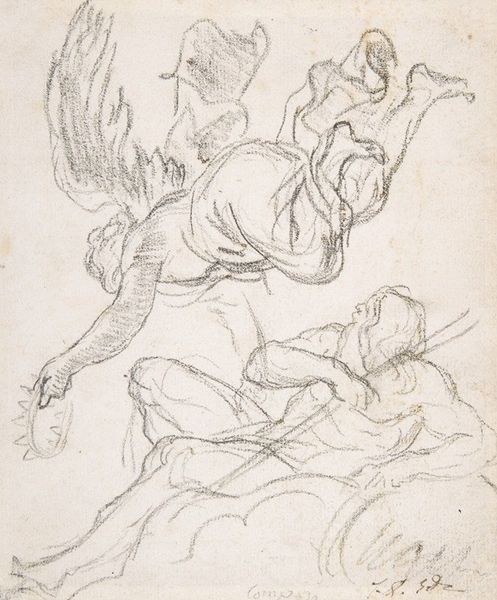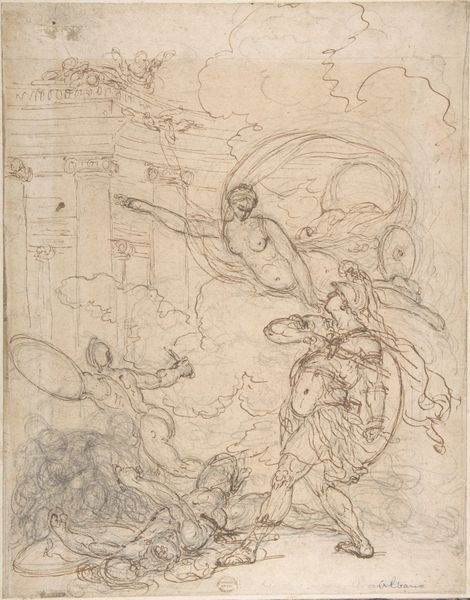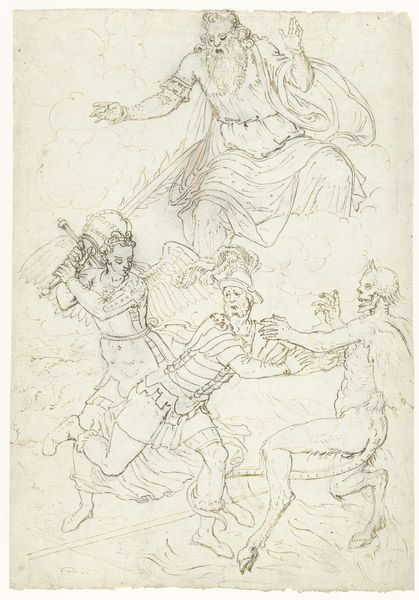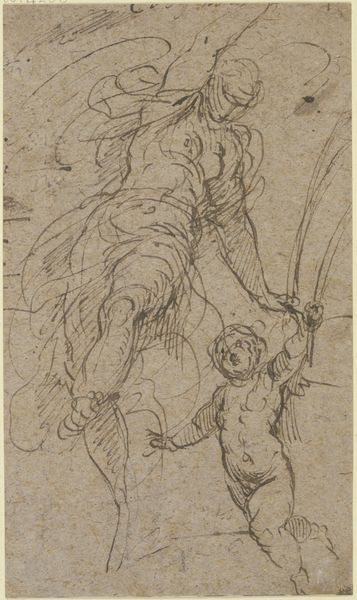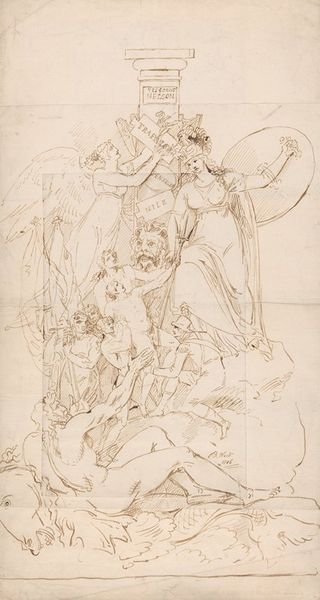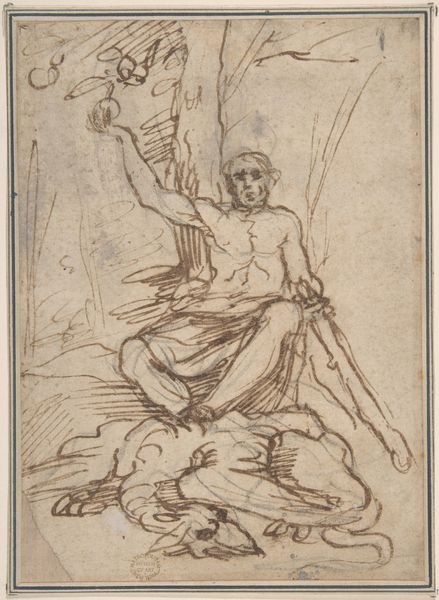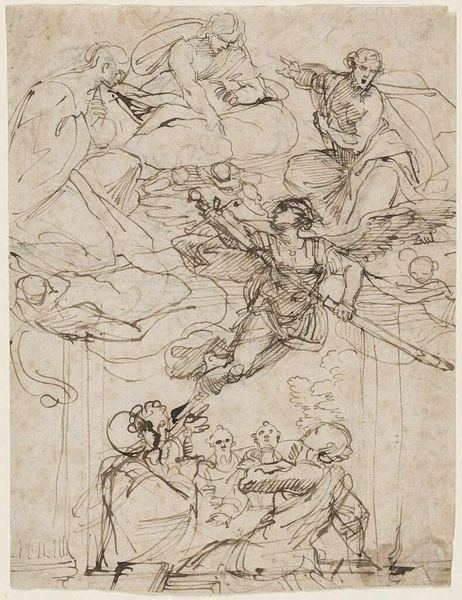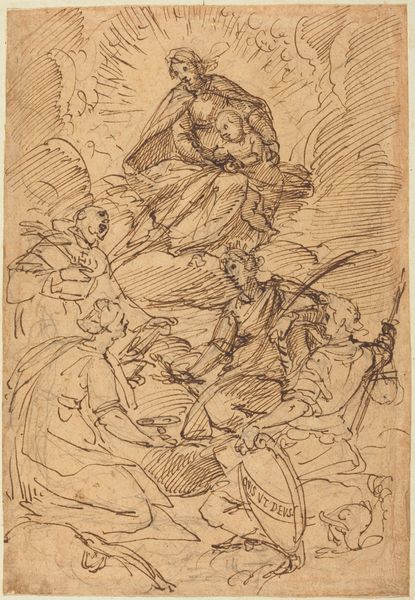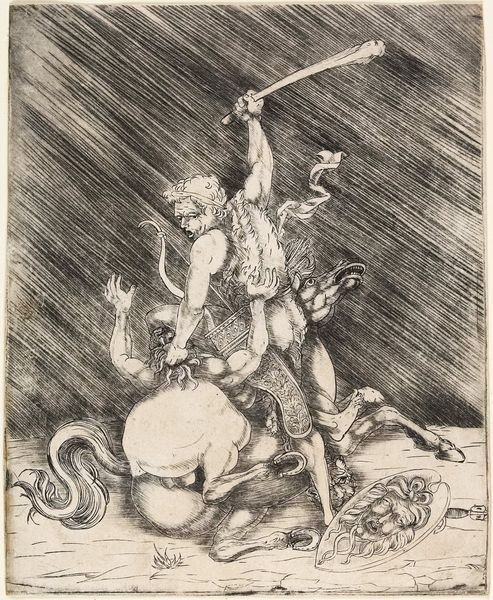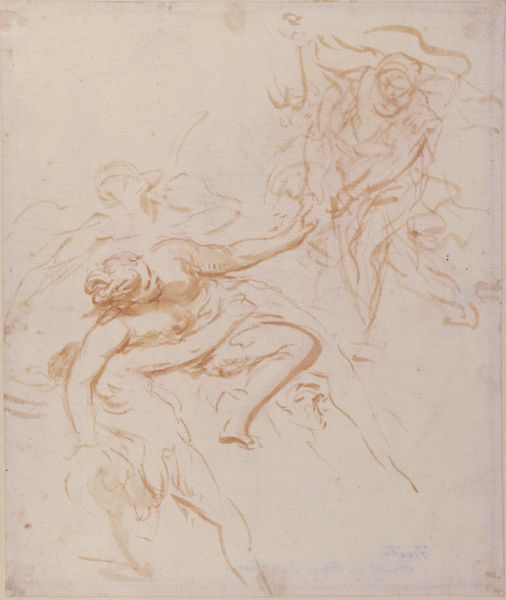
drawing, ink, engraving
#
drawing
#
ink drawing
#
ink painting
#
etching
#
figuration
#
ink
#
line
#
history-painting
#
italian-renaissance
#
engraving
Dimensions: overall: 38.6 x 29 cm (15 3/16 x 11 7/16 in.)
Copyright: National Gallery of Art: CC0 1.0
Curator: Looking at Giulio Romano’s "Saint Michael" from circa 1527-1528, done in ink, what immediately strikes you? Editor: The frenetic energy, I think. The composition feels almost… violent, raw. I am particularly struck by the way the ink creates these very fine, yet forceful lines, contributing to this sense of dynamic struggle. How do you interpret this work? Curator: For me, the immediate question is: how does Romano use such relatively humble materials – ink and paper – to depict this epic battle? The economic realities of artistic production are crucial here. Was this preparatory work for a larger, more expensive commission? Or does the choice of ink democratize the subject, making the divine accessible through a more common medium? The line work suggests the hand of a craftsman, rather than the elevated status we often assign to Renaissance artists. Editor: So you are seeing the artistic choices, like using ink and engraving, as almost political? The engraving would have allowed for reproductions and broader consumption of the imagery, correct? Curator: Precisely. The materiality leads us to questions of accessibility and the economics of image production in the 16th century. We must also ask who controlled these materials and who benefited from the images circulated. The power wasn’t solely in the depicted subject, but also in the means of its distribution and the societal impact. Does considering it this way change how you read the drawing? Editor: Absolutely, I hadn’t considered the mass dissemination aspect and how the very process would change how people saw it. It becomes more than just art; it's a commodity of sorts. Curator: Exactly. Focusing on material and production challenges us to think beyond traditional art historical interpretations and consider the broader social and economic context that shapes the work. Editor: It makes the drawing feel very relevant to today, as the questions about accessible media persist, perhaps in different form. Thanks. Curator: Indeed, and hopefully offers new paths to explore when examining similar artworks.
Comments
No comments
Be the first to comment and join the conversation on the ultimate creative platform.
